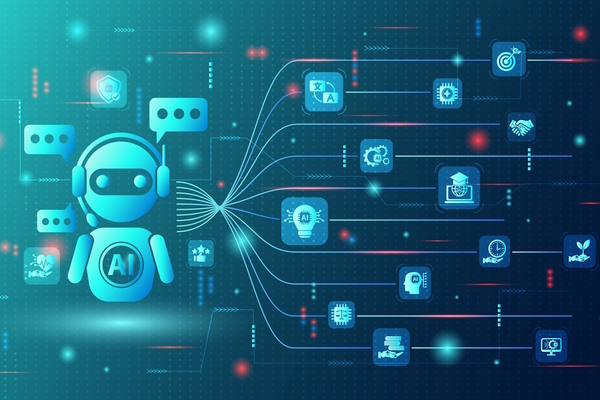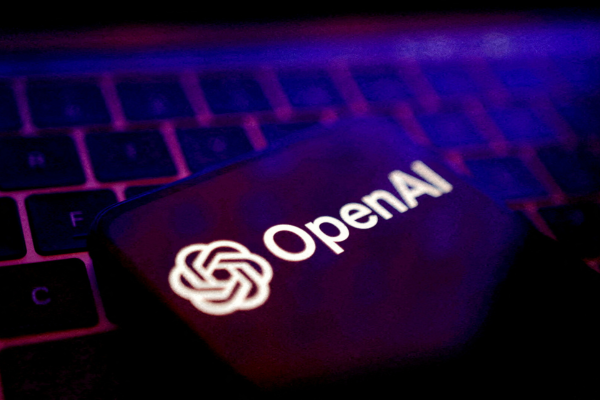What AI-fuelled business intelligence can do: a Salesforce perspective
Sponsored by AvengaTake your business intelligence to the next level with AI-powered solutions from Salesforce

Marketing success usually hinges on delivering consistent, timely, engaging and relevant content. According to the Salesforce State of Marketing report, 78 per cent of high-performing marketers identify data as the most critical asset for creating a cohesive customer journey. Yet only 49 per cent say they have a unified view of customer data sources. This significant disconnect underscores the challenge in effectively leveraging their data many marketing teams face.
For organisations already invested in Salesforce, introducing new AI-driven business intelligence (BI) tools promises numerous benefits. These can include: reduced time to deliver insights; automation; innovation; improved agility and cost savings; and many others. However, these are benefits that depend on high-quality data and robust data strategies.
This article examines AI-driven BI from a Salesforce perspective. It highlights its benefits, uses and future trends. By understanding the potential of AI in BI, organisations can better harness their data to drive success and innovation.
The role of AI in BI
AI integration into BI systems takes data analysis to another level. In short, it offers deep insights and grants predictive abilities. In broader terms, AI brings the following aspects to BI:
- Data accuracy and quality. AI algorithms for data cleaning and validation reduce human errors in data entry. These ensure consistent and reliable data across platforms. According to a study by IBM, organisations implementing AI for data management see a 50 per cent reduction in data errors. Example: A healthcare provider may adapt AI within its electronic health records (EHR) to clean and validate those records, thus reducing data entry errors and ensuring accurate patient information across all departments.
- Real-time data processing and analysis. AI brings immediate data insights for quicker decision-making in the context of real-time trend analysis. This provides the benefits of instant feedback and adjustments. Gartner reports that real-time analytics can reduce operational costs by up to 10 per cent. Example: An e-commerce company can implement AI-driven real-time analytics to monitor customer behaviour, allowing them to adjust marketing strategies on the go to increase sales.
- Predictive analytics and forecasting. AI can predict future trends and behaviours, enhancing decision-making with AI-driven forecasts. There are numerous case studies of successful predictive analytics implementations. McKinsey found that predictive analytics can improve forecasting accuracy by 20 to 30 per cent. Example: A retail chain can use AI-based predictive analytics to forecast inventory needs, potentially reducing stockouts and lowering excess inventory.
These examples show that AI can improve BI systems. It can make data more accurate, provide real-time insights and improve forecasting.
Salesforce’s AI capabilities in BI
You can tap into Salesforce AI capabilities in BI via an interesting and versatile tool – Salesforce Einstein. You can easily integrate it with BI, automate it and get personalised tasks. Moreover, Salesforce reports that companies using Einstein have seen a 20 per cent increase in sales productivity. Here are a few examples to give you a better idea of how this works in different scenarios:
- Automating routine tasks with AI. Salesforce Einstein is all about making data processing and report generation better, easier and faster. The tool helps reduce manual effort with AI-driven automation. According to a Salesforce study, automation of routine tasks can help save up to 30 per cent of time. Example: A financial services company can use Salesforce Einstein to automate its reporting processes, cutting the report generation time from days to minutes and making it possible to focus on more strategic tasks.
- Personalised insights and recommendations. Salesforce Einstein has instruments that help users adjust insights to specific business needs to improve customer interactions with customised data. Personalized BI insights see a 15 per cent increase in customer satisfaction. Example: A retail company can use Salesforce Einstein to analyse customer purchase behaviours and provide personalised product recommendations. This can result in a boost in customer engagement and sales.
These examples show how Salesforce’s AI tools, especially Einstein, can transform BI. They automate routine tasks and provide insights. These personaised insights help drive customer satisfaction and business growth.
Future trends in AI and BI
The future of AI and BI promises even more advanced capabilities and innovations. One can assume that the more AI evolves, the better the tools for BI will get. These are some of the AI in BI trends we expect to appear in the near future:
- Augmented analytics. This technology combines AI with human insights. When coupled with BI, augmented analytics can significantly improve decision-making. According to IBM, by 2025 augmented analytics will drive a 50 per cent increase in business analyst productivity. Example: A telecommunications company can implement augmented analytics to combine AI insights with human expertise, which can improve customer service response times.
- AI-driven data storytelling. This trend taps into AI to create compelling data narratives. These can also be visualised later with the growing number of tools. Forrester predicts that by the end of 2024, businesses using AI-driven data storytelling will see a 20 per cent increase in their ability to communicate insights effectively. Example: A marketing agency can use AI to develop data-driven stories for their clients, resulting in more engaging presentations and an increase in client retention rates.
- Emerging tehnologies expanding the scope of AI in BI. In the next wave of AI innovations, McKinsey estimates that AI advancements will contribute $13 trillion by 2030. Example: A logistics firm can adopt emerging AI technologies to optimise its supply chain, reducing delivery times and cutting operational costs.
These trends show that AI and BI are evolving, and those who stay ahead will be well-positioned. With developments such as the rise of augmented analytics and AI’s role in shaping future BI practices, these companies can use AI for greater innovation and efficiency.
Next steps
AI-powered BI, especially with Salesforce, is transforming businesses. It provides deeper insights and better decision-making. To succeed and innovate, organisations must use AI. Here are some next steps you can take:
- Contact Avenga to learn more about leveraging AI for your BI needs.
- Discover how Salesforce can be integrated with AI to maximise your organisation’s potential.
- Stay informed on the trends and best practices in AI-driven BI.
By following these steps, businesses can fully leverage AI-driven BI and stay ahead in a fast-evolving digital world.

by Matthew Baker, Global Consulting Director, Avenga

Business Reporter Team
Most Viewed
Winston House, 3rd Floor, Units 306-309, 2-4 Dollis Park, London, N3 1HF
23-29 Hendon Lane, London, N3 1RT
020 8349 4363
© 2025, Lyonsdown Limited. Business Reporter® is a registered trademark of Lyonsdown Ltd. VAT registration number: 830519543






